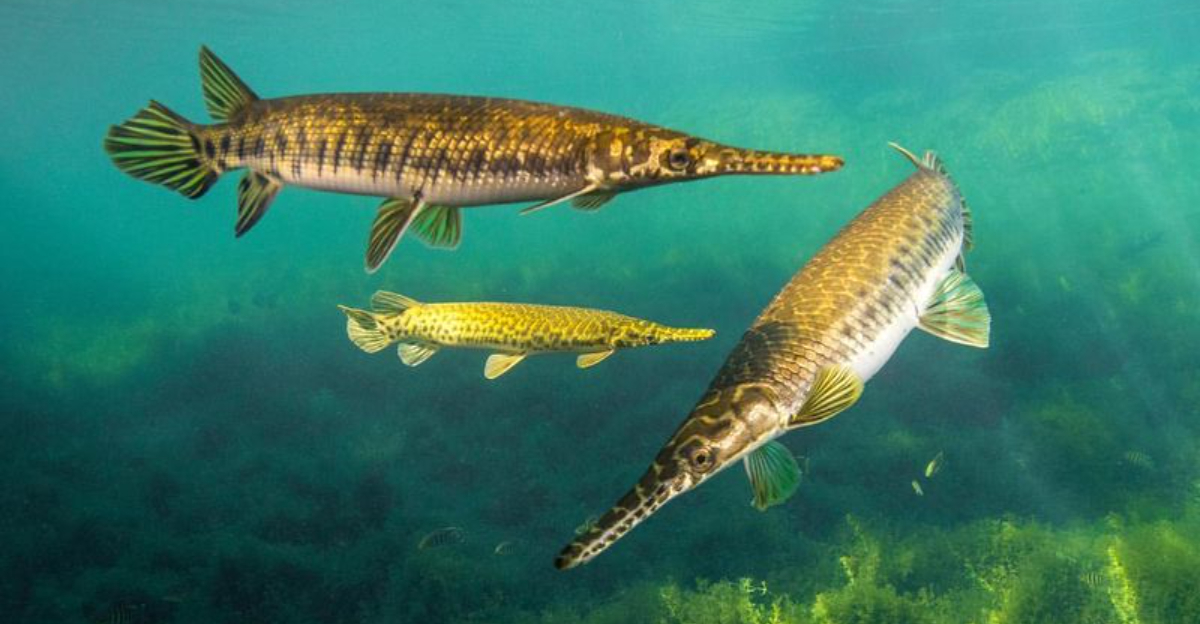Florida’s waterways are teeming with incredible finned creatures that make the state a true haven for anglers, divers, and marine enthusiasts.
From battling the mighty tarpon, known for its strength and acrobatics, to spotting the elusive, prehistoric-looking sawfish gliding through the shallows, Florida offers an unmatched diversity of aquatic life.
Having spent countless hours exploring coastal estuaries, mangroves, and open waters, I’m constantly amazed by the variety and beauty of these 17 remarkable fish species. Each encounter reminds me just how rich and vibrant Florida’s marine ecosystems are—and why they deserve both our awe and protection.
1. The Silver King: Tarpon
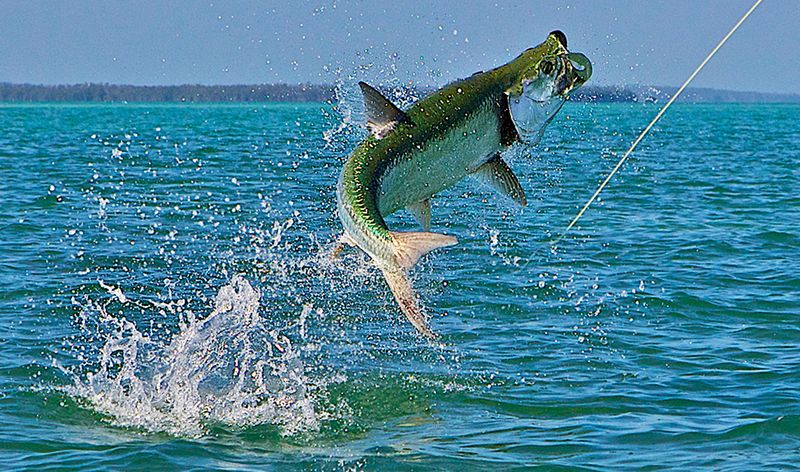
Nothing gets my heart racing like watching a 6-foot tarpon launch itself skyward in a spectacular aerial display! These magnificent creatures, weighing up to 280 pounds, have earned the nickname “Silver King” for their gleaming scales that shimmer like polished armor in the sunlight.
Last summer, I hooked one near Boca Grande Pass and spent nearly two hours in an epic battle that left my arms feeling like jelly. Tarpon are prized for their fighting spirit rather than their taste – most anglers practice catch-and-release to preserve these magnificent gamefish.
With prehistoric origins dating back 100 million years, they breathe air at the surface using a modified swim bladder – a fascinating adaptation that connects them to their ancient ancestors.
2. The Speckled Beauty: Spotted Seatrout
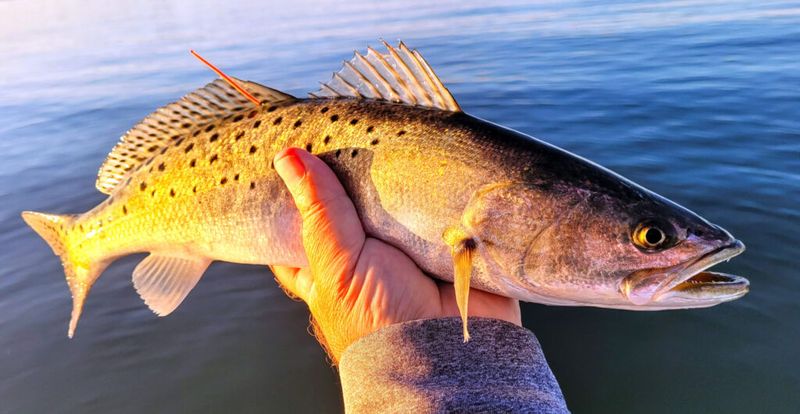
Speckled seatrout hold a special place in my fishing memories – they were my first successful catch as a kid exploring Florida’s grass flats. These gorgeous fish, spattered with distinctive black dots along their silvery sides and characteristic fangs in their upper jaw, create quite the impression.
My favorite spot to find them is in the shallow estuaries around Tampa Bay, where they hunt among seagrass beds during early mornings. The gentle ‘pop’ of my topwater lure often triggers their aggressive strikes, sending ripples of excitement through my fishing rod.
Local anglers affectionately call them ‘specks,’ and their sweet, white flesh makes them a popular dinner choice after a successful day on the water.
3. The Acrobatic Powerhouse: Snook
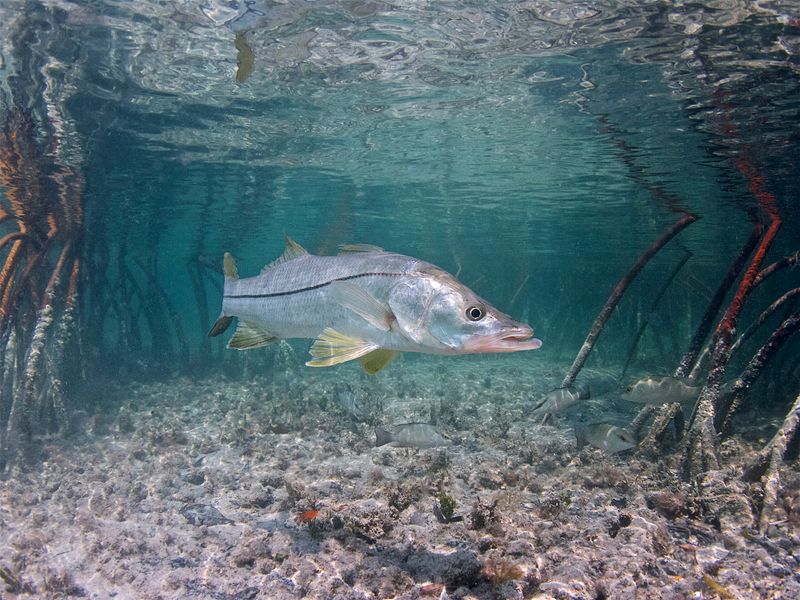
Snook stole my heart the first time I saw one explode from under a mangrove root and nearly yank my rod from my hands! With their distinctive black lateral line and bulldoggish underbite, these ambush predators are instantly recognizable to Florida anglers.
During a memorable night fishing trip near Jupiter Inlet, I watched in awe as snook gathered under dock lights, their silver sides glowing eerily in the darkness. These crafty fish have a knack for wrapping your line around pilings or darting back into structure – I’ve lost more tackle to snook than any other species!
Temperature-sensitive creatures, they can’t survive water below 60°F, making them perfect symbols of Florida’s subtropical charm.
4. The Colorful Reef Dweller: Queen Angelfish
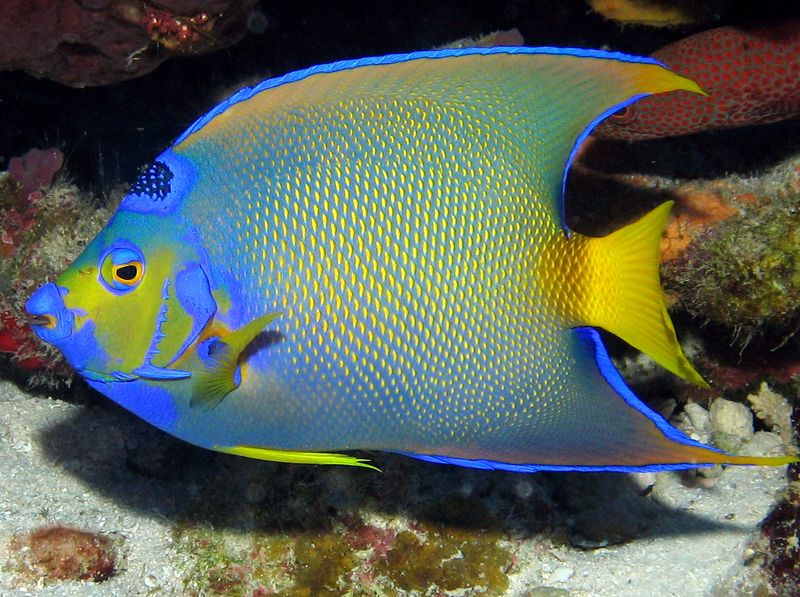
Floating weightlessly above a coral reef off the Florida Keys, I came face-to-face with what looked like a swimming piece of art – a queen angelfish! The electric blue and yellow patterns adorning its compressed, disc-shaped body seemed almost too vibrant to be real.
These spectacular reef dwellers sport a distinctive dark spot ringed with blue on their foreheads, which locals playfully call their ‘crown.’ Young queens look completely different from adults, with striking blue and yellow stripes that gradually transform as they mature.
While snorkeling, I’ve watched them gracefully pick at sponges and algae with their small mouths, maintaining the delicate balance of the reef ecosystem with every bite.
5. The Ancient Hunter: Alligator Gar
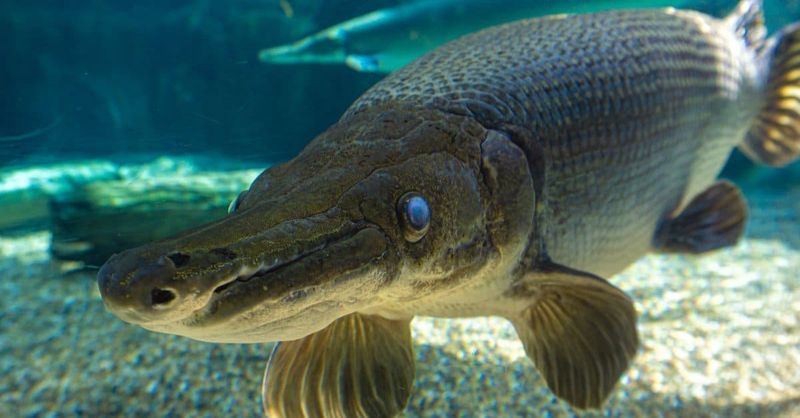
Glimpsing an alligator gar for the first time in the St. Johns River left me speechless – it was like peering through a window to prehistoric times! These armored giants, reaching up to 10 feet long, feature a fearsome double row of teeth and alligator-like snouts that earned them their intimidating name.
My fishing buddy once hooked one accidentally while bass fishing, resulting in a two-hour struggle against what seemed like a submarine with scales. Their thick, ganoid scales were once used by indigenous peoples as arrowheads – I’ve even found them washed ashore after storms.
Despite their menacing appearance, these gentle giants primarily feed on smaller fish and pose no threat to humans, contrary to old fishermen’s tales.
6. The Speedy Predator: Wahoo
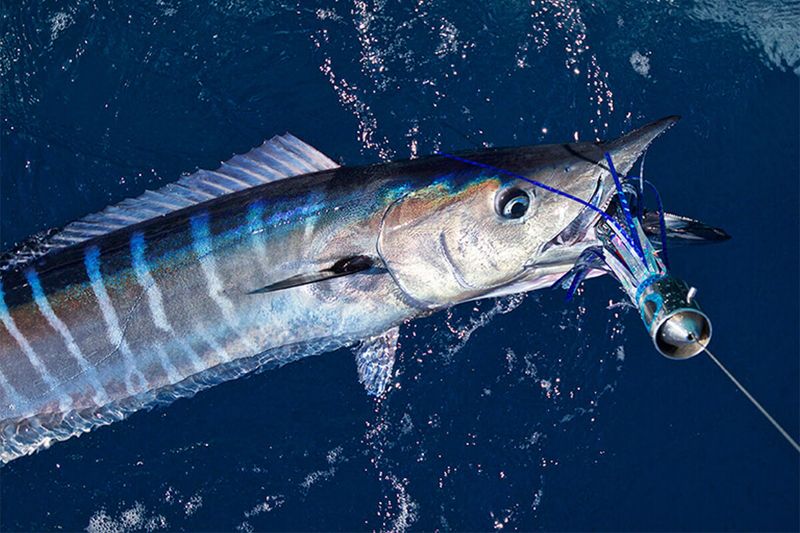
Wahoo are the Formula 1 racers of Florida’s offshore waters! My reel screamed like a banshee the first time I hooked one trolling off Key West – these streamlined speedsters can dash at an astonishing 60 mph, making them one of the fastest fish in the sea.
Their electric blue vertical stripes against a silvery background make for a stunning sight when they finally come alongside the boat. I’ll never forget watching my wahoo steak sizzling on the grill that evening – their firm, white meat is considered among the tastiest of all game fish.
Local captains call them ‘sky rockets’ because of how quickly they can empty a fishing reel of line when hooked, providing an unforgettable test of any angler’s skills.
7. The Gentle Giant: Goliath Grouper
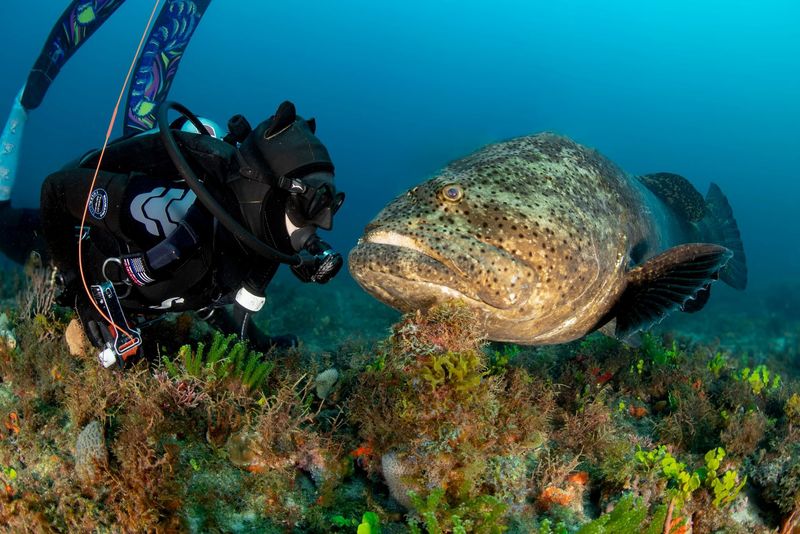
Encountering a goliath grouper underwater feels like meeting a swimming Volkswagen! During a dive near an artificial reef off Naples, I froze as a 400-pound behemoth emerged from the shadows, its mouth large enough to swallow a basketball.
These gentle giants, once called ‘jewfish,’ were nearly fished to extinction before receiving protected status in 1990. Their recovery represents one of Florida’s greatest conservation successes. When threatened, they produce a distinctive booming sound by contracting their swim bladder – I felt it vibrate through my entire body when a curious one approached too closely.
Despite their imposing size, they display puppy-like curiosity toward divers, making them underwater celebrities among Florida’s marine life.
8. The Lightning-Fast Hunter: Barracuda

Barracudas remind me of underwater lightning bolts – silver streaks that materialize from nowhere to strike with astonishing precision! While snorkeling near Looe Key, I witnessed a four-foot ‘cuda appear seemingly from thin air to snatch a small fish just yards away.
Their menacing appearance, complete with prominent fang-like teeth protruding from jaws that never fully close, gives them an undeserved fearsome reputation. My favorite barracuda memory involves watching a group of them hanging motionless in the current beneath a bridge in the Keys, looking like suspended silver torpedoes waiting for the perfect moment to strike.
Surprisingly sociable creatures, they often follow snorkelers out of curiosity rather than hunger – though I still keep my shiny jewelry covered when swimming in their territory!
9. The Colorful Fighter: Peacock Bass
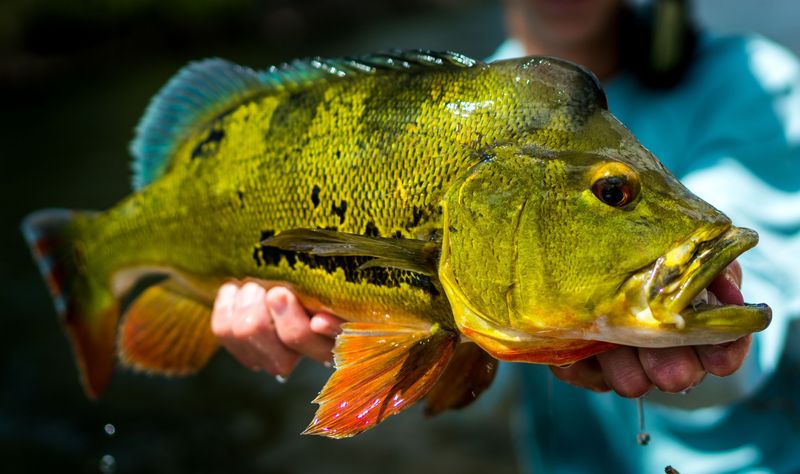
Peacock bass transformed my opinion of freshwater fishing in Florida with their explosive strikes and spectacular colors! Originally from the Amazon, these gorgeous invaders were intentionally introduced to South Florida canals in the 1980s to control other exotic fish populations.
My first encounter happened in a Miami canal where the water was so clear I could watch a male, adorned with its distinctive eye-spot and brilliant orange-red belly, aggressively guard its nest. Their fighting ability is legendary – pound for pound, they pull harder than any other freshwater fish I’ve tangled with.
Unlike many invasive species, peacock bass created a thriving fishery without damaging native ecosystems, bringing a tropical splash of color to Florida’s urban waterways.
10. The Mysterious Dweller: Florida Gar
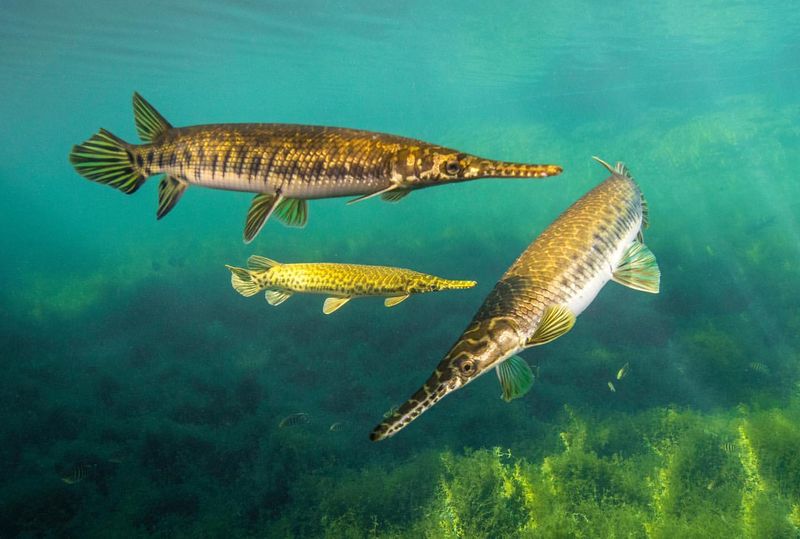
Florida gar seem like living fossils gliding through the tannic waters of the Everglades! My canoe adventures often include sightings of these prehistoric-looking creatures floating motionless at the surface, their long, tubular bodies and needle-nosed snouts making them unmistakable.
One sweltering August afternoon, I watched in fascination as dozens gathered in a shallow pool, gulping air with their specialized swim bladders – an ancient adaptation that allows them to survive in oxygen-poor waters. Unlike their larger cousin the alligator gar, Florida gar rarely exceed three feet, making them perfect inhabitants of smaller streams and ponds.
Native Floridians once considered them trash fish, but I’ve developed a deep appreciation for their resilience and unchanged design that has survived millions of years.
11. The Jumbo Prize: Mahi-Mahi
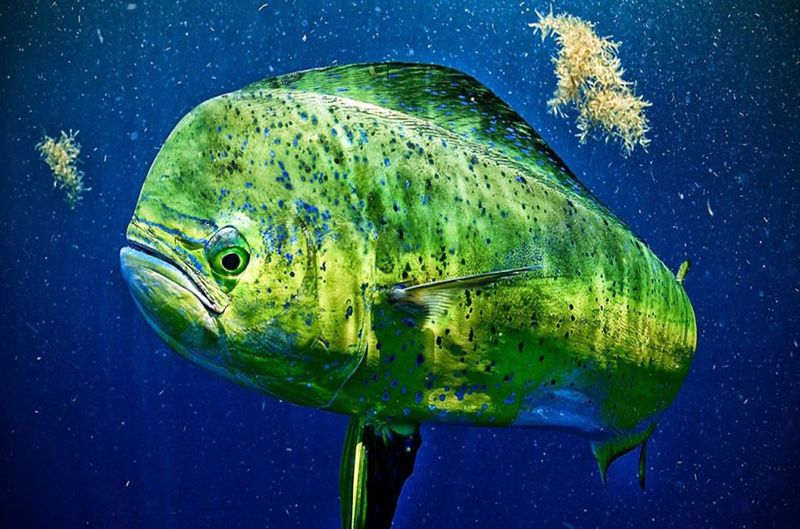
Mahi-mahi (dolphinfish) create pure magic when they light up the water with their electric blues, greens, and yellows during a fight! Watching a bull mahi change colors like a neon sign while battling at the end of my line ranks among my most thrilling fishing moments off Florida’s Atlantic coast.
These oceanic acrobats grow at an astonishing rate, reaching sexual maturity in just 4-5 months. During a memorable offshore trip near Palm Beach, we found a floating pallet swarming with mahi – the feeding frenzy that ensued when we tossed out baits was like nothing I’d ever witnessed before.
Their sweet, firm white flesh makes them a prized table fare, completing the perfect ocean-to-plate experience that Florida fishing is famous for.
12. The Armored Fighter: Sheepshead
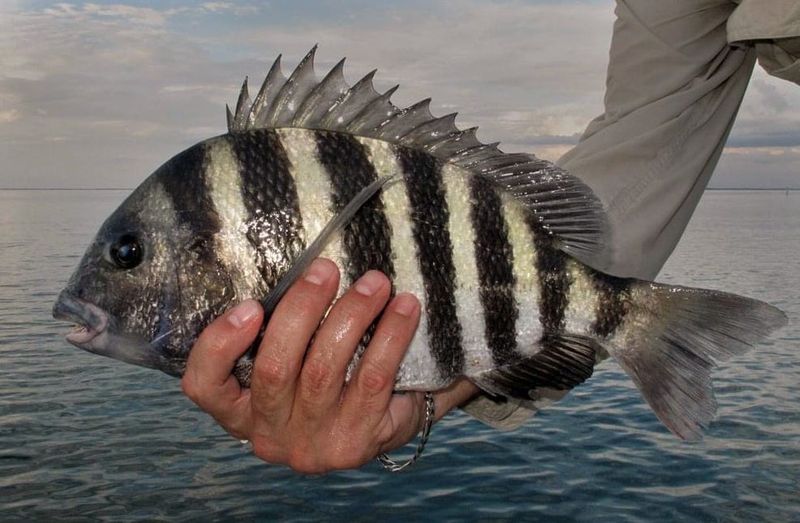
Sheepshead fish flaunt one of the most bizarre smiles in the ocean – human-like incisors and molars perfectly designed for crushing barnacles and crabs! My first encounter with these striped oddities happened while fishing around bridge pilings in Tampa Bay, where their light nibbles required ninja-like reflexes to hook them.
Their black and white vertical stripes earned them the nickname ‘convict fish’ among local anglers. I’ve spent countless winter days targeting them around coastal structures, marveling at how such a strange-looking fish can yield such delicious, firm white fillets.
Watching a sheepshead methodically pick barnacles from pilings with those eerie, human-like teeth remains one of the most fascinating behaviors I’ve observed in Florida’s diverse marine world.
13. The Redfish: Florida’s Copper Bruiser
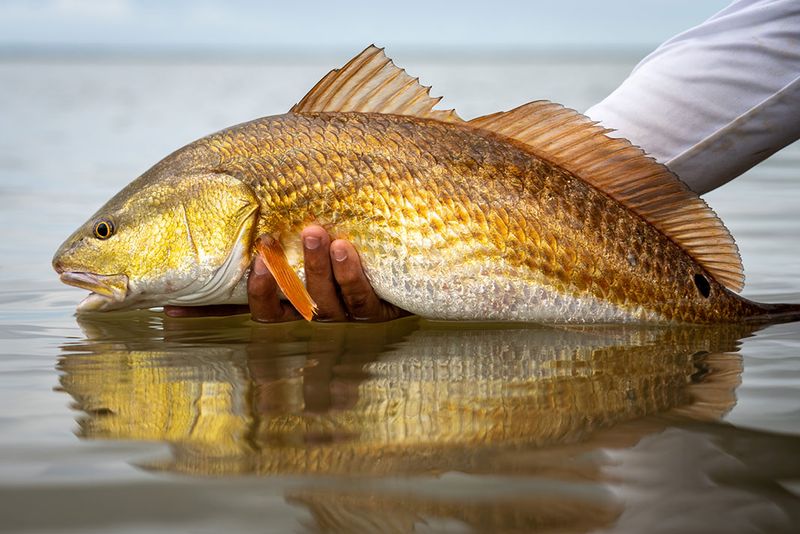
Redfish create magical moments in the shallow flats with their distinctive copper color and tell-tale black spot on the tail! My obsession with these bruisers began when I spotted my first ‘tailing’ red – its tail waving above the waterline as it rooted for crabs in skinny water at sunrise.
During fall mullet runs along Florida’s east coast, I’ve witnessed schools of massive bull reds churning the surface into a coppery froth as they gorge themselves. Their powerful, steady pulls feel completely different from the frantic runs of other gamefish – more like being connected to a submarine than a fish.
A redfish on the half-shell, grilled with scales on and flesh up, remains my favorite celebratory meal after a successful day stalking these copper-colored beauties.
14. The Bucket-Mouthed Bass: Largemouth
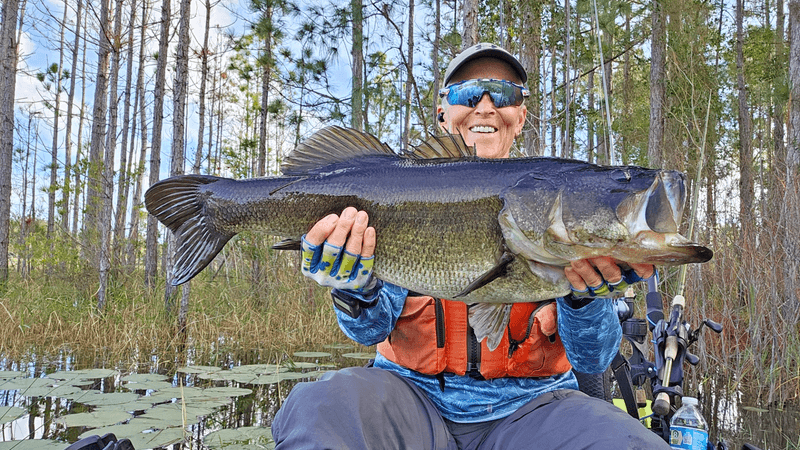
Florida-strain largemouth bass grow to monstrous proportions in our state’s warm waters, becoming bucket-mouthed behemoths that haunt anglers’ dreams! My personal best – a 12-pounder from Lake Okeechobee – hit my plastic worm with such force it nearly yanked the rod from my hands at dawn one misty morning.
These ambush predators thrive in our tannic lakes and rivers, their olive-green bodies perfectly camouflaged among lily pads and hydrilla beds. The explosive surface strikes of a big bass attacking a topwater lure create heart-stopping moments that have kept me returning to Florida’s freshwaters for decades.
Our state’s unique subspecies grows larger than northern bass, fueling a multi-million dollar tournament industry and earning Florida the title of ‘Bass Fishing Capital of the World.’
15. The Toothy Torpedo: Kingfish
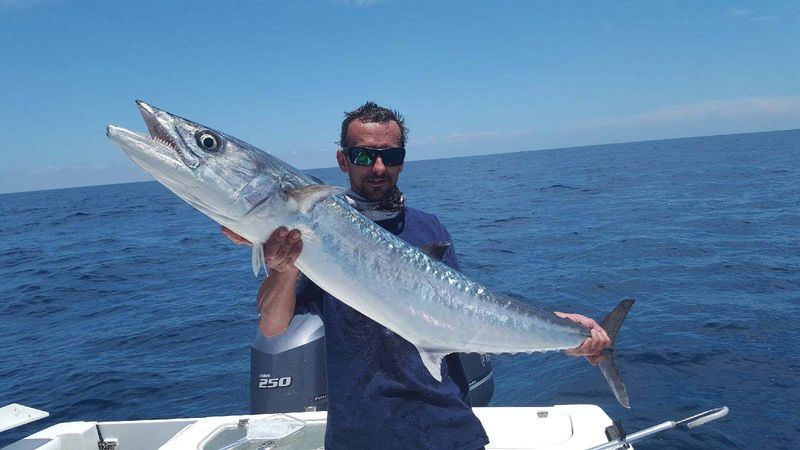
King mackerel streak through Florida’s offshore waters like silver torpedoes, teeth gleaming and dorsal fin slicing the surface! My first kingfish experience involved a 40-pounder skyrocketing on my bait, then making a blistering run that left my fishing reel smoking – literally!
These speedsters hunt in wolf packs, corralling baitfish into tight balls before slashing through them with razor-sharp teeth. During migration seasons, I’ve joined the armada of boats that gather at spots like ‘The Kingfish Hole’ off Clearwater Beach, where the action can be non-stop from sunrise to sunset.
Few fishing moments match the adrenaline rush of watching a smoker king’ (the nickname for big ones) gray-hound across the surface with your bait in its mouth.
16. The Bottom Dweller: Florida Pompano
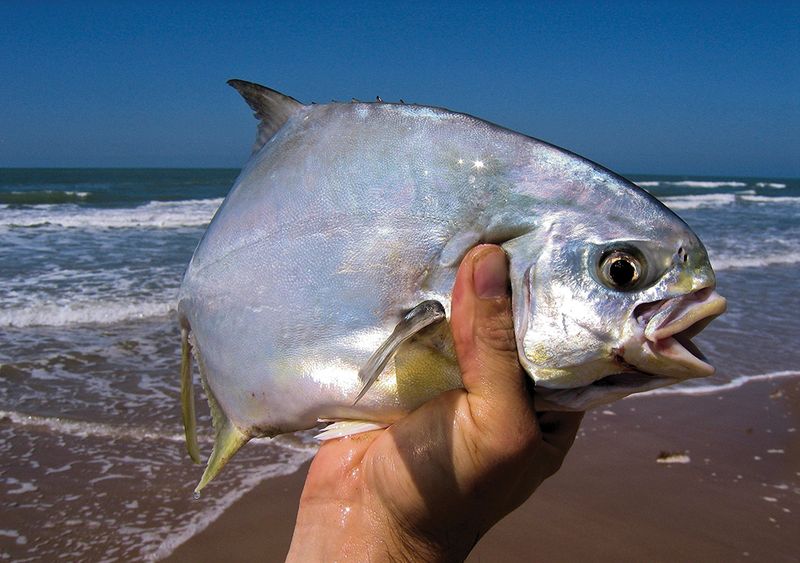
Florida pompano might look unassuming with their silvery bodies and yellow bellies, but they’re considered culinary gold among seafood aficionados! My introduction to pompano fishing happened on Sanibel Island, where I learned to read the subtle signs of sand fleas in the surf – the pompano’s favorite snack.
These compact powerhouses fight well above their weight class, using their deep, flat bodies to leverage against the current. One memorable spring morning, I hit the pompano migration along Hutchinson Island, catching my limit within an hour as these silver dollars seemed to compete for my sand flea-tipped jigs.
Fresh pompano cooked simply with lemon and butter remains my benchmark for perfect seafood – sweet, clean-tasting, and uniquely Floridian.
17. The Sword-Nosed Hunter: Sawfish
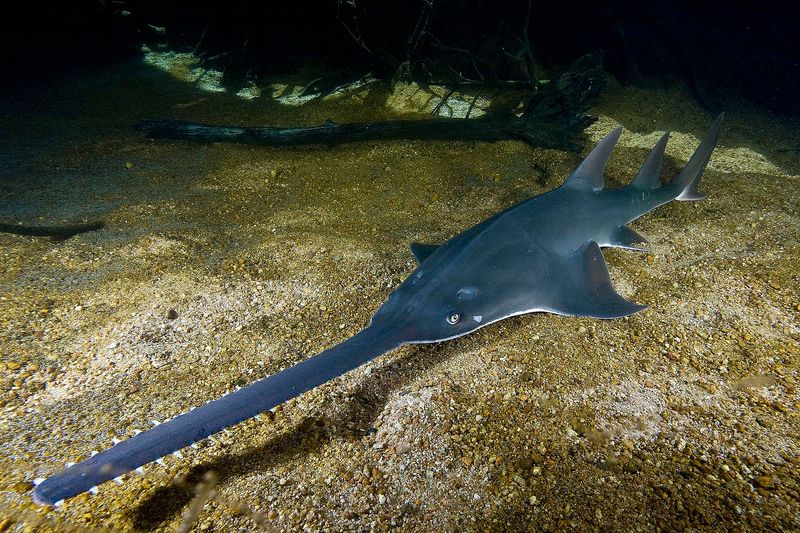
Encountering a sawfish in the wild feels like stepping into a prehistoric documentary! These endangered creatures, with their distinctive toothed rostrum (saw) extending several feet from their head, once roamed Florida’s coastlines in abundance but are now rare treasures.
During a kayaking trip through Ten Thousand Islands, I experienced the unforgettable sight of a smalltooth sawfish gliding beneath my transparent kayak, its saw sweeping side-to-side as it searched for prey. These gentle giants use their unique appendage to stun fish and dig for crustaceans in the sandy bottom.
Florida remains one of the last strongholds for these magnificent creatures, with conservation efforts focused on the mangrove nurseries where young sawfish develop before venturing into deeper waters.
18. The Mighty Sailfish: Ocean Speedster
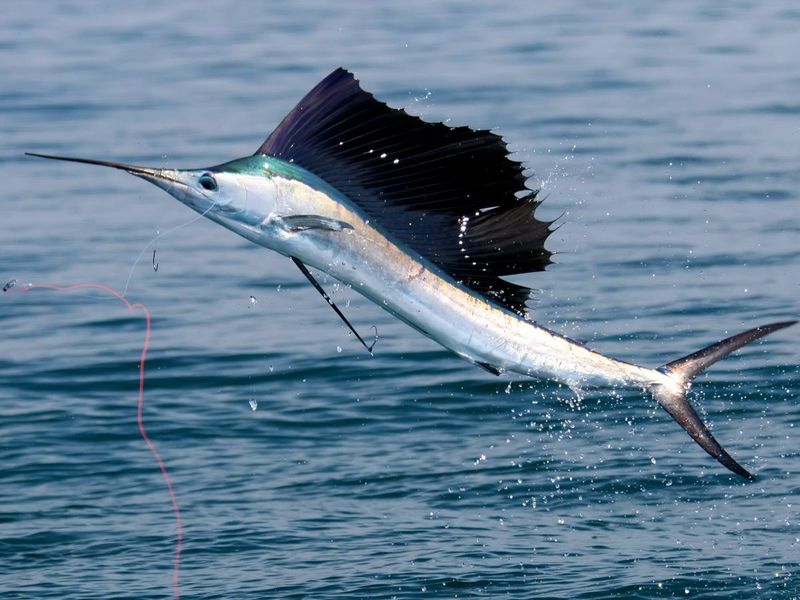
Sailfish create pure poetry in motion when they light up with electric blue hues and raise their magnificent dorsal fins while hunting! My first sailfish encounter off Stuart (the ‘Sailfish Capital of the World’) left me speechless as it greyhounded across the surface, seeming to walk on its tail.
These oceanic sprinters can reach speeds over 68 mph, making them the fastest fish in the sea. During winter months, I’ve joined the fleet targeting sailfish along Florida’s east coast, where the Gulf Stream runs close to shore, creating perfect conditions for these pelagic predators.
The tradition of releasing sailfish has become standard practice among responsible anglers, ensuring future generations can experience the thrill of watching that distinctive sail rise above the water’s surface.
